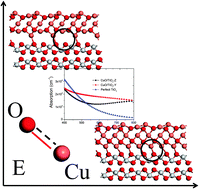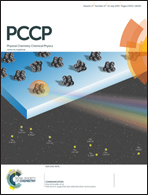Anisotropic relaxation of a CuO/TiO2 surface under an electric field and its impact on visible light absorption: ab initio calculations
Abstract
Ab initio calculations on the anisotropic relaxation of a CuO/TiO2 surface under electric fields and the visible light absorption of these relaxed surfaces are reported. We compare the relaxation of the CuO/TiO2 surface under the electric fields in the direction of [001] or [010]. Fewer Cu–O bonds with highly coordinated Cu-ions are found in the CuO/TiO2 relaxed surface under the electric field in the [010] direction. The Cu–O bonds in the interface of the CuO/TiO2 surface led to an improved visible light absorption in the polarization direction of [001]. The CuO/TiO2 relaxed surface under the electric field in the [010] direction exhibits a more effective absorption of visible light. However, the electric field in the [001] direction induces more relaxation on the CuO/TiO2 surface, breaking the Cu–O bonds. This leads to the partial reduction of CuO to Cu2O on the CuO/TiO2 relaxed surface under the electric field in the [001] direction and inefficient absorption of visible light is observed for this surface.


 Please wait while we load your content...
Please wait while we load your content...